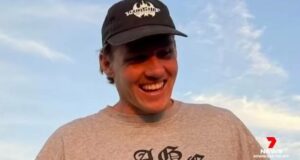The National Transportation and Safety Board has retrieved the “black box” that included details and audio and video recordings from the fateful duck boat. The Ride-the-Ducks amphibious vehicle found itself int he middle of a storm and sank within a few minutes of the first signs of trouble.
One disturbing piece of information that has been revealed in the recording is that the captain may have turned off the video camera in the minutes before the sinking. NTSB investigators are not commenting on that startling revelation from the black box.
Survivors of the tragedy have said that Ride The Ducks was aware of the forecast because it shifted the itinerary of the 70-minute tour, choosing to hit the water first in an attempt to beat the storm.
The NTSB released this timeline:
6:27 p.m. The captain and driver boarded the previously empty vehicle. The driver sat in the driver’s seat and the captain sat in the side-facing seat to the right of the driver. (The captain operates the duck on water and the driver operates duck on the road.)
6:28 p.m. The crew was told to take the water portion of the tour first by an individual who briefly stepped onto the rear of the vehicle.
6:29 p.m. As the passengers were loading, the captain made a verbal reference to looking at the weather radar prior to the trip.
6:33 pm. The driver stated a passenger count of 29 and shortly after, the vehicle departed the terminal facility. The captain narrated the tour while the vehicle was in motion.
6:50 p.m. In the vicinity of the boat ramp, the captain began a safety briefing regarding the water portion of the tour. The briefing included the location of emergency exits as well as the location of the life jackets. The captain then demonstrated the use of a life jacket and pointed out the location of the life rings. The captain moved into the driver’s seat and the driver moved into the seat directly behind.
6:55 p.m. The captain announced to the passengers that they would be entering the water. The boat entered the water. The water appeared calm at this time.
Between 6:56 and 7 p.m. The captain allowed four different children to sit in the driver’s seat, while he observed and assisted.
7 p.m. and 25 seconds. Whitecaps rapidly appeared on the water and winds increased.
7 p.m. and 42 seconds. The captain returned to the driver’s seat. The driver lowered both the port and starboard clear plastic side curtains.
7:01 p.m. The captain made a comment about the storm.
7:03 p.m. and 15 seconds. The captain made a hand-held radio call, the content of which is currently unintelligible.
7:04 p.m. and 15 seconds. An electronic tone associated with the bilge alarm activated.
7:05 p.m. and 21 seconds. The captain reached downward with his right hand and the bilge alarm ceases.
7:05 p.m. and 40 seconds. The captain made a hand-held radio call, the content of which is currently unintelligible.
In the final minutes of the recording: Water occasionally splashes inside the vehicle’s passenger compartment. (The low frame rate and relatively low resolution make it very difficult to be more precise in the preliminary review.)
7:07 p.m. and 26 seconds. An electronic tone associated with the bilge alarm activated.
7:08 p.m. and 27 seconds. The inward facing recording ended, while the vehicle was still on the surface of the water.
At 7:09 p.m. the first calls were made to 911, according to audio from the Stone County Public Safety Dispatcher.
The NTSB investigation includes the U.S. Coast Guard, Missouri State Police Highway Patrol, Ride The Ducks, city of Bransonand the National Weather Service.
 Metro Voice News Celebrating Faith, Family & Community
Metro Voice News Celebrating Faith, Family & Community








